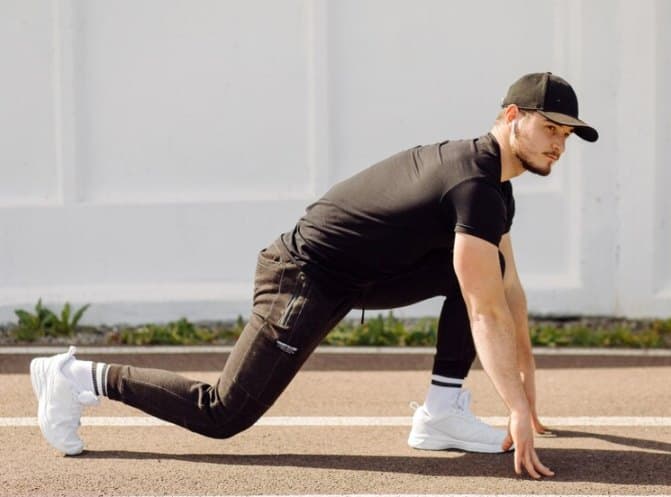Stretching is a common practice that many people incorporate into their daily routines. It promotes better circulation, relieves tension, and can help improve flexibility over time.
However, have you ever noticed that sometimes you feel less flexible after stretching? This puzzling phenomenon can leave you wondering about the science behind it. Within this article, we embark on a journey through the intricacies of this phenomenon, illuminating the potential reasons behind it.
Why Do I Feel Less Flexible After Stretching?
When we engage in a stretching routine, we are essentially extending our muscles and tendons beyond their resting length. This elongation triggers a reflex known as the myotatic reflex, which is an involuntary contraction of the stretched muscle. This reflex serves as a protective mechanism, preventing overstretching and potential injury.
Stretching is an essential component of maintaining a healthy and agile body. However, contrary to expectations, you might occasionally experience a temporary decrease in flexibility after stretching. This can be attributed to several factors:
Overstretching and Micro-Tears
One plausible explanation for feeling less flexible after stretching could be overstretching. While stretching is essential for improving flexibility, pushing beyond one’s limits can lead to micro-tears in the muscle fibers.
These micro-tears, although a natural part of muscle growth and adaptation, can lead to a temporary decrease in flexibility immediately after stretching.
Stabilizing Effect of Muscle Contractions
Another factor to consider is the stabilizing effect of muscle contractions. When a muscle is stretched, the body’s natural response is to engage the antagonist muscle (the muscle opposite to the one being stretched) to prevent injury.
This contraction, though protective, can result in a temporary feeling of reduced flexibility.
Neuromuscular Adaptations
The nervous system plays a pivotal role in controlling muscle function and flexibility. Prolonged or intense stretching sessions can lead to neuromuscular adaptations, causing the body to adjust its perception of a comfortable range of motion. This adaptation can initially manifest as a sensation of reduced flexibility.
Muscle Relaxation and Perception
Stretching can lead to muscle relaxation, which might give you the sensation of reduced tension. As a result, your brain might interpret this newfound relaxation as reduced flexibility, even though your muscles are actually benefiting from the stretch.
Temporary Muscle Fatigue
Intense stretching can activate muscle fibers, causing them to work differently than they’re used to. This temporary muscle fatigue can lead to a sensation of decreased flexibility immediately after stretching.
Stretch Reflex and Protective Mechanisms
The stretch reflex, an automatic response of your muscles to being stretched, can sometimes cause them to contract rather than lengthen. This reflex is the body’s protective mechanism to prevent overstretching and potential injury.
Hydration and Elasticity
Dehydration can impact the elasticity of your muscles and connective tissues. When your body is not adequately hydrated, it can lead to a feeling of stiffness and reduced flexibility after stretching.
Pre-existing Muscle Imbalances
If you have muscle imbalances or tightness in specific areas of your body, stretching might initially highlight these issues, making you feel less flexible. Consistent stretching can help address these imbalances over time.
Stretching Techniques and Methods
The type of stretching you perform, whether static or dynamic, and the techniques you use can influence how your muscles respond. Some techniques might lead to temporary sensations of reduced flexibility.
Read Also: Why Does My Sternum Pop When I Stretch?
How to Maximize Flexibility and Overcome Post-Stretching Stiffness
Experiencing reduced flexibility after stretching doesn’t mean you should abandon your stretching routine. Instead, consider the following strategies to enhance your flexibility journey:
Gradual Progression
Start with gentle stretches and gradually increase the intensity and duration over time. This approach allows your muscles to adapt and minimize the likelihood of post-stretching stiffness.
Stay Hydrated
Maintaining proper hydration levels is crucial for muscle elasticity. Make sure to drink an adequate amount of water throughout the day to support your flexibility goals.
Incorporate Dynamic Stretching
Dynamic stretches involve controlled movements that mimic activities you’ll perform during your workout or daily life. These stretches can improve blood flow and prepare your muscles for more intense stretching.
Focus on Breath Awareness
Deep, controlled breathing during stretching helps relax your muscles and promotes effective oxygenation. This can counteract the sensation of reduced flexibility.
Address Muscle Imbalances
Consult a fitness professional or physical therapist to identify and address any muscle imbalances through targeted stretching and exercises.
Opt for Regular Stretching
Consistency is key to improving flexibility. Incorporate regular stretching sessions into your routine to gradually train your muscles to become more pliable.
FAQs
Can I prevent feeling less flexible after stretching?
While it’s common to experience temporary sensations of reduced flexibility, following proper stretching techniques, staying hydrated, and addressing muscle imbalances can help minimize this sensation.
Can reduced flexibility after stretching lead to injuries?
No, the sensation of reduced flexibility is typically temporary and doesn’t increase the risk of injury. However, overstretching can lead to injury, so it’s important to stretch safely.
Is static stretching better than dynamic stretching?
Both static and dynamic stretching have their benefits. Dynamic stretching can be particularly helpful before workouts, while static stretching is effective for improving flexibility over time.
How long should I hold a stretch?
Aim for 15-60 seconds of static stretching per muscle group. Gradually increase the duration as your flexibility improves.
Should I stretch before or after exercise?
Incorporating dynamic stretching before exercise helps warm up your muscles, while static stretching is more suitable after exercise to improve flexibility.
Conclusion
The sensation of feeling less flexible after stretching arises from a combination of physiological responses and neuromuscular adaptations. By comprehending these underlying mechanisms, individuals can refine their stretching routines, unlocking heightened flexibility and overall well-being.
Consistency, balanced training, and mindful progression are the cornerstones of a successful flexibility-enhancing regimen. Embrace the journey towards greater flexibility, and you’ll reap the rewards in the long run.
